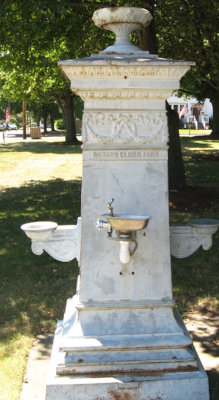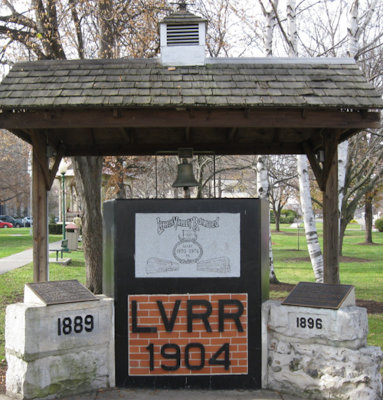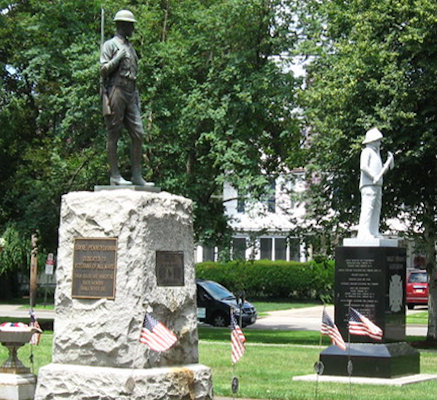Howard Elmer Park
Howard Elmer Park is located in the heart of Sayre. It was originally called “City Park” back in the late 1870s. After President James Garfield was assassinated in 1881 a tree was planted in his honor in the park. This tree unfortunately did not survive the elm tree blight of the 1950s.
In 1912, the park was renamed Howard Elmer Park after the town’s founder. Mrs. Elmer donated a cast iron fountain located one the North East Corner end of the Park. The fountain was donated in 1912, featuring four drinking outlets along with a trough for dogs.
Howard Elmer Park features a large bandstand in the center, constructed in 1885. A monument dedicated to the Doughboys of World War I near the South Elmer Avenue side of the park. There are two other monuments located in the same general area: dedication to the volunteer firefighters and the Battle Cross Tribute Memorial Monument dedicated in 2015.
1957, Dr. Donald Guthrie was honored by having the four streets surround Howard Elmer Park named Guthrie Square. A plaque on a granite boulder on the South Elmer Avenue of the park shows the dedication.
1991, a memorial in memory of the L.V.R.R. prominence was dedicated during the Sayre’s centennial placed. The dedication include the enormous letters from the BIG SHOPS with the date “1904” along with the with lettering” L.V.R.R. “from the enormous locomotive shops. The memorials were memorials were provided by the Sayre Historical Society. The Sayre Epiphany School students placed a plaque and shrub in the park for the centennial.
Today, you will find the Farmers Market and the Summer Concert Series in the park.




